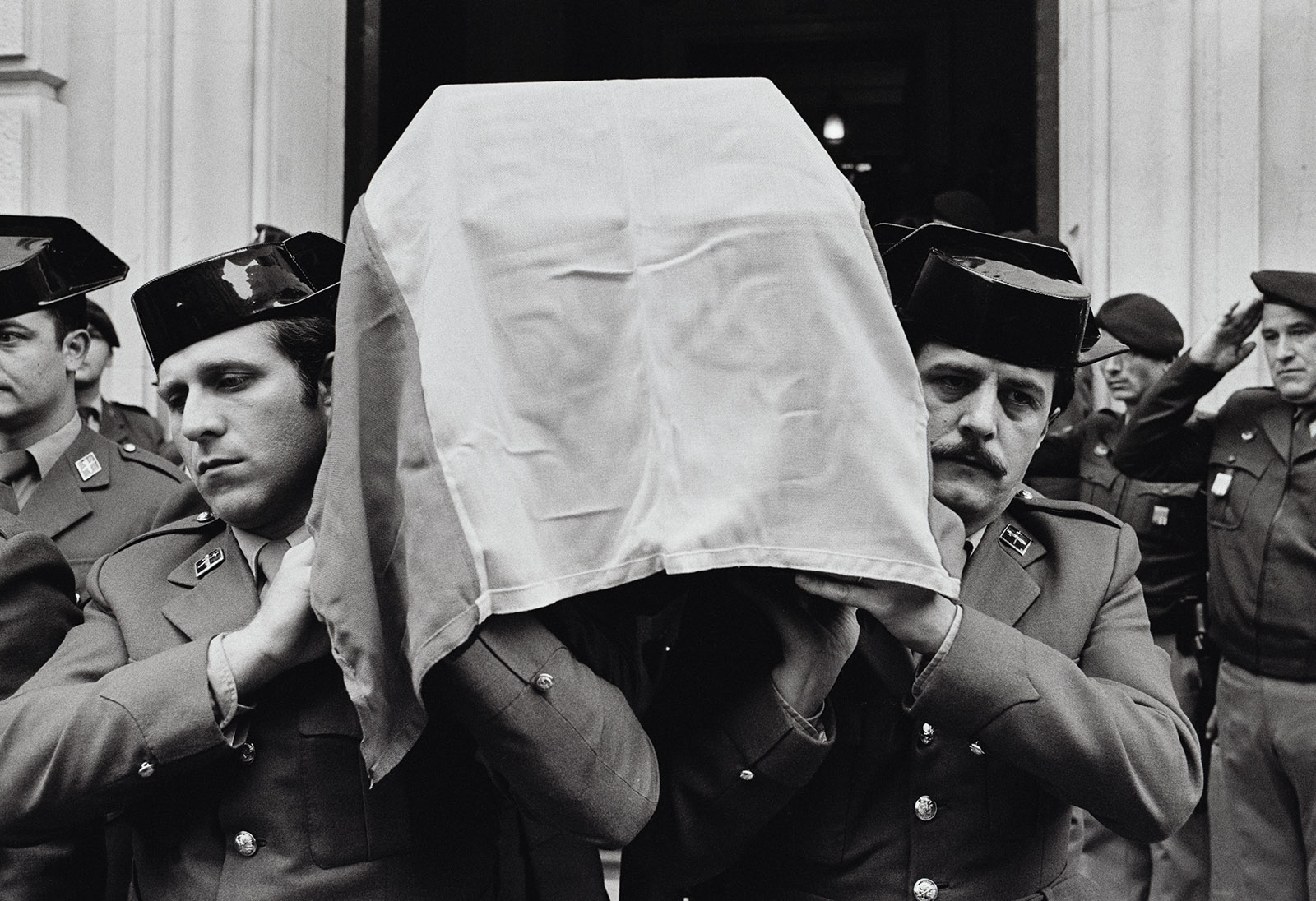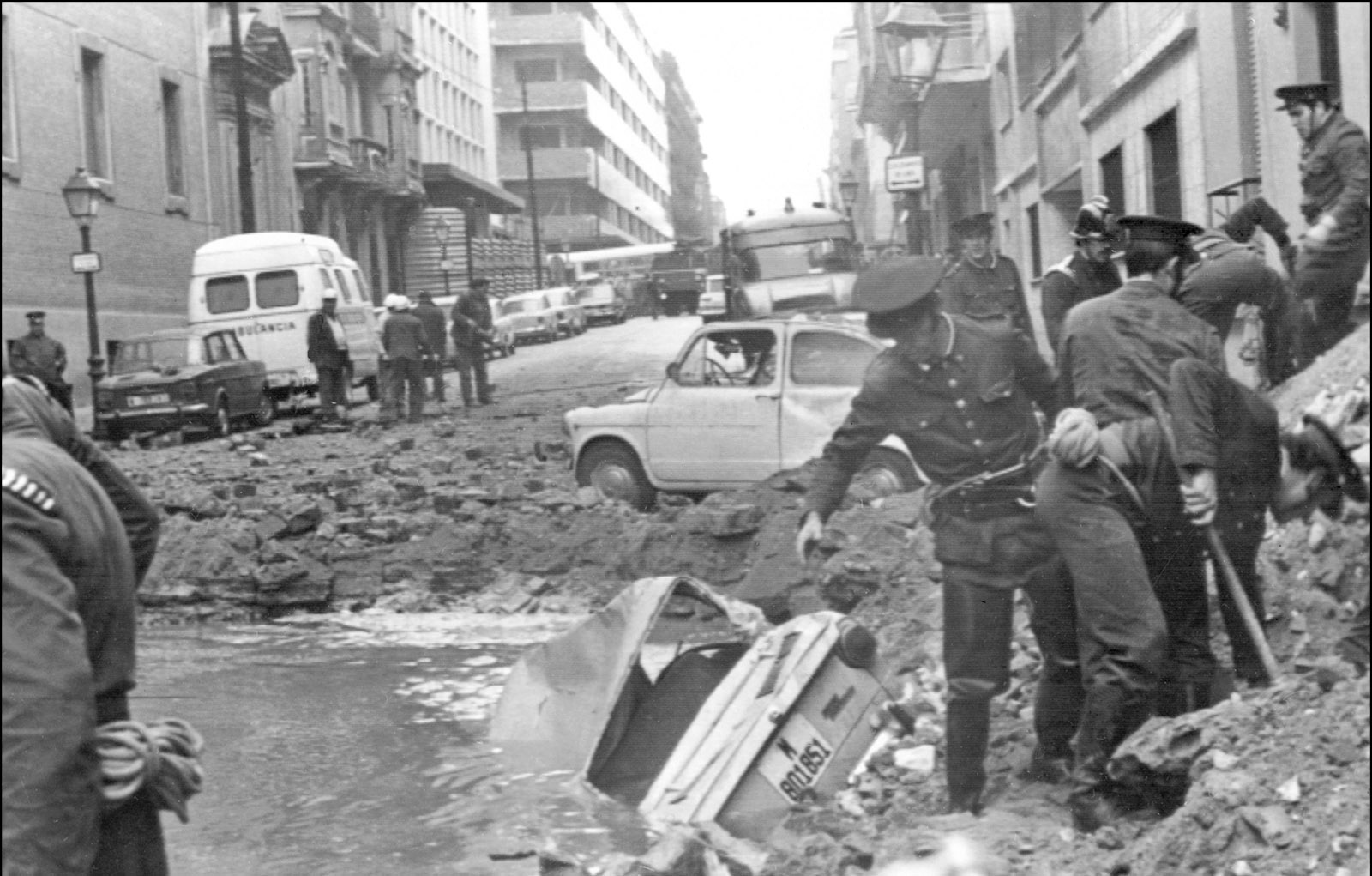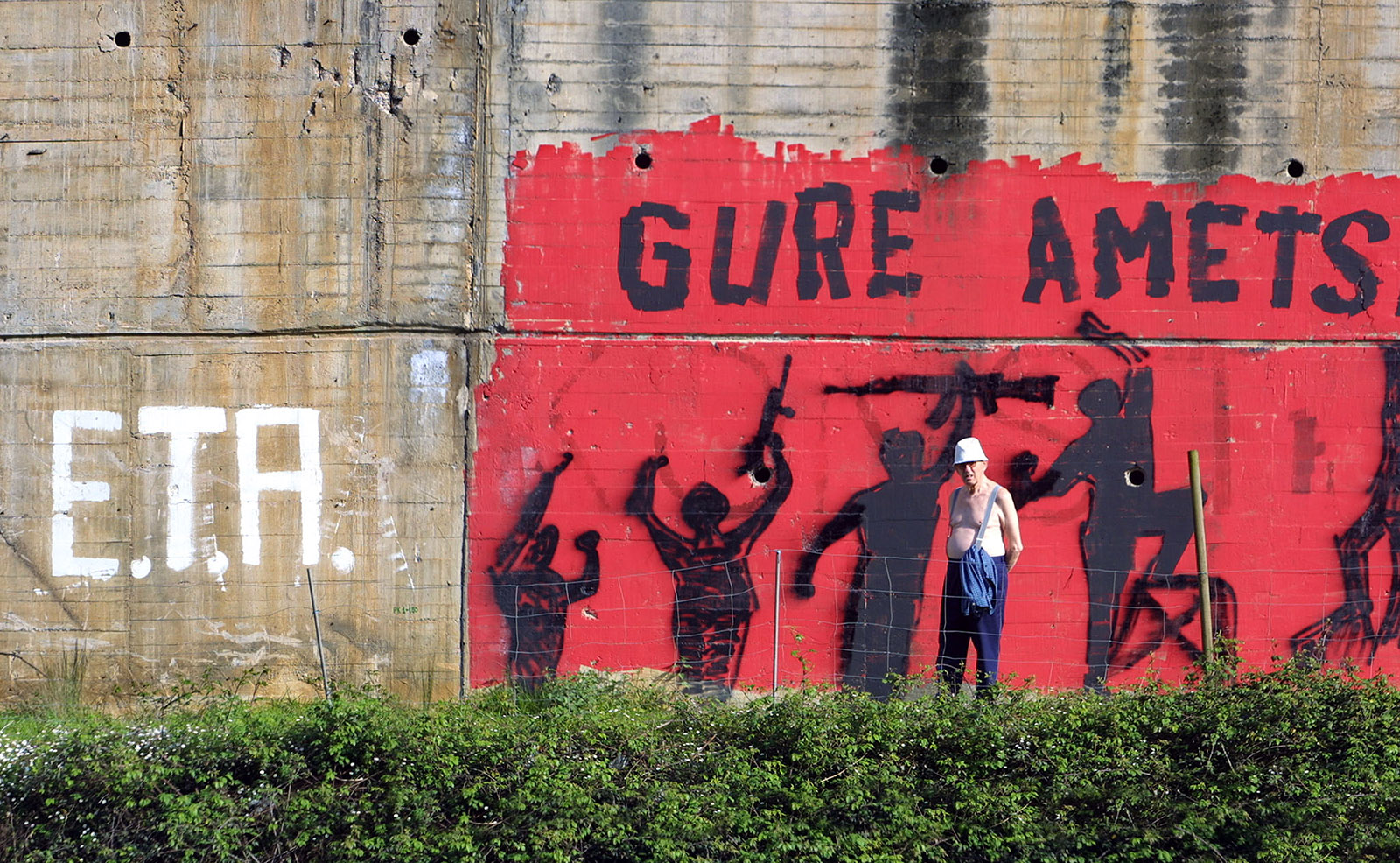When, last month, the Basque armed separatist group ETA issued an apology ahead of its imminent dissolution, it also had to provide that apology with an explanatory note. The art of apology is never an armed group’s strong suit. But the need to explain why one is apologizing shows the extreme difficulty ETA has in coming to grips with its past. Between 1968 and 2010, in its bid to establish an independent socialist Basque state, ETA killed more than eight hundred people and injured thousands.
Apologies often take the form of addled justifications, an impossible quest for innocence, and so it is with ETA’s apology. Here we have, for the first time in the group’s history, some emotional language, and a clumsy attempt at empathy. ETA apologizes to the victims “not involved in the conflict,” while the others—security forces, politicians—are offered only formal “respect.” It plays with language, it asks for a reciprocal apology, it calls for some kind of moral equivalence between ETA and the Spanish state before its final disbandment. “Nobody can change the past,” read ETA’s statement, but the apology is an attempt to do just that.
It’s not difficult to see why these words have fallen flat in Spain. The government has dismissed ETA’s statement out of hand; ETA victims have called it hypocritical. After all, what words could comfort those who have lost their loved ones? But, failed as it is, it is an apology worth reading. Apologies are attempts at bringing some order into guilt; as such, they are revealing. That is why ETA, after waging one of the longest and cruelest terror campaigns in modern European history, dragged its feet for years before uttering even such limp expressions as: “We have caused suffering,” “This should have never happened,” “Nobody can change the past.” Even amid the propaganda and the caveats, these sentences stand out. At last, some soul-searching has begun.
How did it all start? ETA would like us to think the struggle dated to long before its own formation, in the Spanish Civil War. “We, the generations after the bombardment of Guernica” proclaims the preamble to its apology. The truth is that many other places in Spain were bombed during the war—Madrid and Barcelona among them. The whole country suffered the forty-year dictatorship of General Franco that followed. It was against that background that ETA came into being, but the movement’s story, like that of so many other violent political groups, cannot be explained by a founding myth. Yes, there was Franco, but there were also chance and choice, issues of ideology and personality. It’s not simple.
Odd as it may now seem, ETA was not born as an armed resistance group that turned to terrorism, but as a cultural enterprise to save the Basque language and its people’s customs (its name is an acronym of the Basque words for “Basque Homeland and Liberty”). It was founded in 1958 by a group of dangerously idealistic students, many of them connected to the Catholic Church, who were dissatisfied with the inaction of the clandestine Basque Nationalist Party. Arrests, police beatings, and fear hardened them, though their experience was probably no more extreme than what was suffered by members of other clandestine groups elsewhere in Spain who never resorted to violence. But in those days, there was a fascination with leftist insurgencies and anti-colonial struggles elsewhere in the world—in Indochina, Cuba, Algeria, and so on. The fledgling ETA began to envision an independent, socialist Basque Country.
It took a page out of the book of the Algerian National Liberation Front—quite literally, it copied the FLN’s field manual. Its members began to carry guns, but their use was constantly postponed; it was more a pose than a tool, a numinous object lost in a haze of endless theoretical discussions of Marxism. And then, in 1968, came the first killing, unplanned, almost by chance. An ETA member was stopped at a road block, got nervous, and shot a traffic policeman dead; then he was killed in turn.
ETA had tasted blood, that of its own and of others. The hemorrhage would not stop for decades.
General Franco’s regime was unquestionably brutal, and this made many in the underground Spanish political opposition ambivalent toward ETA in those years. Abroad, the dramatic Burgos trial of 1970, when sixteen ETA members burst into patriotic song after a military court handed down their death sentences, brought international attention. The French philosopher Jean-Paul Sartre notoriously gave them his public support. ETA’s daring 1973 assassination of Franco’s declared successor, Admiral Luis Carrero Blanco, galvanized a demoralized anti-Franco left. And when two ETA members were executed by firing squad in 1975, many in Spain and abroad were horrified. I remember my mother, who lived in Galicia and barely knew what ETA was, making the sign of the cross and muttering, “God help us,” when she heard the news on the radio.
Advertisement
Whatever confusion there was about ETA’s true nature would soon be dispelled. Franco died in his bed on November 20, 1975. Four days later, ETA killed again. By 1976, it was already apparent that Spain was fast becoming a modern democracy. In 1977, a general amnesty emptied Spain’s jails of political prisoners, including ETA members. All parties, even the separatist ones, were legalized. The Basque Country was to enjoy broad, devolved powers. But even then ETA didn’t disappear. Why not?
It did split. The larger and more powerful faction, ETA “political-military,” gradually abandoned violence in favor of political action, while the smaller, weaker faction, ETA “military,” carried on. This is what ETA means when its apology says that the pain “should not have been prolonged for so long.” But the truth is that the ETA that continued its campaign of terrorism after the advent of democracy was not the same ETA. The group had to be rebuilt almost from scratch. For this new ETA, Franco had been an adversary, but the real enemy was Spain itself. It was true that the group’s goal of a separate socialist republic was unattainable even in a democracy, but there was perhaps a deeper motive to stick to the gun. ETA had become enamored of the power it conferred. As other young Europeans were discovering in those years—the Red Army Faction in Germany, the Red Brigades in Italy, the Provisional Irish Republican Army in Northern Ireland—violence in the name of a political cause is a powerful drug.
As with all stimulants, the dose had to be constantly increased. Not only did the violence not subside, it grew sharply and became more indiscriminate. The car-bomb made its appearance, leaving a trail of massacres—the worst being the killing of twenty-one shoppers at a mall in Barcelona in 1987—while the selective assassinations of the top brass kept the country on the brink and were in part responsible for an attempted coup in 1981 by a faction within the armed forces. All this was financed by an efficient, quasi-official racket, the “revolutionary tax,” which mercilessly badgered thousands of businessmen and their families. As part of ETA’s “fundraising” activities, almost fifty of them would be kidnapped, and some forty were killed.
Political violence is a disease, a contagious one. In the mid-1980s, the Socialist government of Felipe González, or a clandestine part of it, was tempted to adopt a shortcut: a dirty war to deal with the terrorist group. Spain’s “deep state” set up the so-called GAL (Antiterrorist Liberation Groups) to target alleged ETA members in their sanctuary over the border in south-western France. At least twenty-seven people were killed in this counter-terrorism operation, which was not the Spanish government’s only detour from legality but by far its most blatant. To the credit of Spanish democracy, this dirty war ended with a minister’s being jailed, albeit briefly.
By the mid-1990s, ETA seemed adrift in a sea of violence of its own making. It was clear the group had the strength to survive, but not the popular support needed to win. The former quiet acquiescence of the Basque people of earlier times was giving way to a sharp division between a militant minority and the majority that was tired of it all, many nationalists among them.
When I visited the Basque country around that time to write a piece about the conflict, I found a strange mix of fanaticism and fatalism, fear and anger. In a way, ETA had succeeded in creating a separate country, though its separation was not from Spain but from reality. Its dreamed-of “Basque State” was barely a state of mind, and not a healthy one. The situation was bizarre: ETA was both in the shadows and out in the open through its legally allowed political front, Batasuna. It was Basque society, fearful to speak out against them, that was becoming almost clandestine.
In 1992, the entire leadership of ETA was arrested at Bidart, in southwestern France, in a spectacular operation of the French and Spanish police. A new leadership took its place immediately. I was with Basque friends at an idyllic restaurant in the French Basque country, under the shadow of an old oak, the Basque sacred tree, when news broke that the new chief of ETA’s political bureau was going to be Mikel Antza (an alias of Mikel Albizu), a writer. “An intellectual who has business with guns!” said one of my friends, a disillusioned nationalist, with dismay. “Now this is going to be really bad.” He was right. Thus cornered, ETA devised yet another strategy—“the socialization of suffering,” a poetic-sounding name for a murderous policy that consisted of inflicting pain on every sliver of Basque society. The kale borroka—street fighting carried out by very young militants, sometimes minors—would instigate havoc with a constant stream of sabotages and violent demonstrations, while the commandos picked soft targets: public servants, small businessmen, journalists, and, most of all, modest town councilors who belonged to “Spanish” parties. One of them, a completely unknown village politician named Miguel Ángel Blanco, who was twenty-nine years old (born the same year ETA began to kill), became a national symbol when he was kidnapped in 1997. Millions of Spaniards took to the streets in a moving silence to demand, almost to beg for, his release. Forty-eight hours later, Blanco was shot in the back of the head and his body left in a forest.
Advertisement
That murder was just one among many, but its significance went beyond the unprecedented outpouring of grief it caused. It revealed something important about a group dominated by the demon of the gun. Normal people could not understand why ETA would do something like that when the group could so easily have improved, albeit minimally, its image by pardoning their hostage. Insiders understood it perfectly: ETA neither needed nor wanted sympathy or support; what it sought was unwavering loyalty beyond any possible moral qualm. If this had not been clear until then, after the death of Miguel Ángel Blanco, anyone who would still defend or justify ETA was someone ETA could count on forever. That is the secret logic of militancy: it is not rejection, but doubt, that it strives to suppress.
That is why the ETA of the 2000s was a smaller organization, filled with fugitives from the kale borroka: angry, amateurish young zealots who would make one tactical mistake after another (in the course of two years, seven would die in accidents while handling explosives). By then, the cooperation of the French authorities with Spain had deprived ETA of its sanctuary in France. Dogged police pressure, the growing hostile indifference of the Basque people, and, in Ireland, the precedent of the IRA’s farewell to arms, all pointed toward demise for ETA. Then September 11 happened in New York and Washington; and in 2004, almost two hundred people were killed in another Al- Qaeda attack, this time in Madrid. It was quite an irony: ETA’s ability to cause harm was all of a sudden diminished by comparison. Worse than being defeated, ETA had been minimized.
Thus began ETA’s long goodbye. In September 2010, the group announced its decision “not to carry out armed actions.” In January the following year, it declared a permanent ceasefire. It took six more years for ETA to reveal, in April last year, the location of its weapons caches in France. Now, finally, the group has announced its intention to dissolve itself. It was ahead of this that ETA issued its apology, “to put out definitively the flames of Guernica,” as it said in the closing sentence.
In truth, the flames of Guernica were put out long ago. Picasso’s famous painting denouncing that tragedy has been hanging in a Madrid museum for decades. Even the flames of ETA were extinguished years ago. As for the vision of an independent Basque Country, the paradox is that ETA has made that goal less, not more, feasible. By a turn of fate, another Spanish secessionist movement, that of Catalonia, is now in full swing, while few speak now of Basque independence. Though by no means successful, the Catalan push for nationhood—peaceful, if controversial—has achieved far more than ETA ever did through violence.
Will there be a negotiation now? Successive Spanish governments made a point of not negotiating with ETA, though common sense told them to do otherwise every time there was the faintest glimmer of hope for peace. None of those talks bore fruit; not in 1987, 1988, 1999, or 2006. They were always scuppered by ETA itself whenever an agreement seemed at hand. It’s as though what ETA feared most was precisely this, the moment of reflection upon its past, the reckoning with its own story.
There probably will be some sort of negotiation, but only on technicalities—in particular, the status of the hundreds of ETA prisoners in Spanish jails. Any suggestion of amnesty will cause heated debate: few in Spain are inclined to show mercy. But the law itself, after the removal of the emergency regulations that mandated long, punitive sentences for terrorist offenses, may begin to sort things out, at least for some prisoners—though it will be too late for one, who killed himself in jail in March. In a way, he will probably be the last of ETA’s victims.





